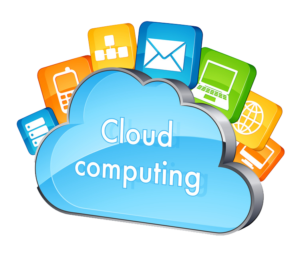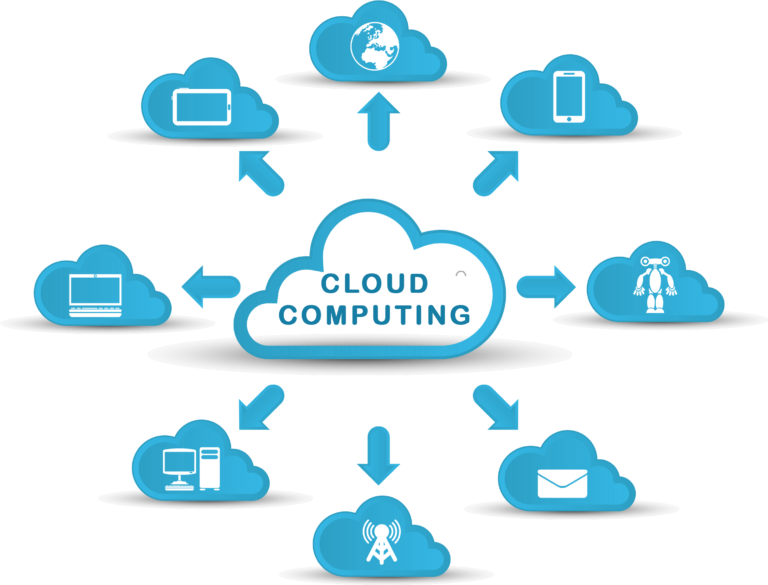
Cloud Computing
In the rapidly evolving world of technology, cloud computing is a transformative force. It has fundamentally altered how people save and share data, how businesses operate, and even how governments deliver services. In this blog post, we’ll look at the field of cloud computing, including its basic principles, benefits, challenges, and influence on the advancement of digital technology.
The basic concept of cloud computing is the sale of computer services over the Internet (“the cloud”), including networking, servers, storage, databases, software, analytics, and more, with the goal of promoting economies of scale, quicker innovation, and more flexible resource allocation. These services often fit into one of three main categories:
Infrastructure as a Service (IaaS)
This provides virtualized computing resources via the internet, including storage and computers.
Platform as a Service (PaaS)
Developers can create, launch, and maintain apps on an infrastructure-free platform thanks to PaaS.
Software as a Service (SaaS)
SaaS gives customers the option to subscribe to get software applications via the internet, which they can use on any device with an internet connection.



Cost-Efficiency
One of the main advantages of cloud computing is its affordability. This eliminates the need for costly on-premises technology and the associated maintenance costs. Because businesses only pay for the resources they really use, this is a scalable and reasonably priced solution.
Scalability and Flexibility
It is simple to scale up or down cloud services to accommodate changing business needs. This scalability is especially advantageous for startups and businesses with fluctuating demand.
Accessibility
Online access to cloud resources is possible from any location. Through the facilitation of remote work, collaboration, and data access, this enhances flexibility and productivity.
Reliability and Redundancy
Reputable cloud service providers offer high levels of redundancy and reliability and store data across multiple data centers. Thus, there is a lower possibility of data loss in the event of a disaster or hardware malfunction.
Security
The security precautions that cloud providers invest in are often very substantial, often beyond the capabilities of a single business. However, customers are still responsible for safeguarding their apps and data, so data security remains a shared responsibility.
Innovation and Speed
The technology of cloud computing makes it easier to quickly integrate new services and applications. It encourages innovation by removing the financial and time barriers associated with traditional IT infrastructure.
Despite the many benefits of cloud computing, there are a few problems that companies must address:
Security Concerns
Privacy concerns may surface while storing confidential data on the cloud. Organizations must use robust security protocols, encryption, and access controls in order to lessen these threats.
Data Privacy and Compliance
When using cloud services, complying with data privacy laws (such as GDPR and HIPAA) may provide difficulties. Understanding the rules and requirements for compliance is crucial.
Downtime and Outages
Although cloud service providers aim for high availability, errors can nevertheless occur. To lessen the impact of system disruptions, companies must have a backup plan in place.
Cost Management
Oversight and management deficiencies might lead to a dramatic increase in cloud costs. Preventing billing statement shocks requires the application of effective cost-control strategies.


Cloud computing is still developing due to ongoing developments in fields like edge computing, server less computing, and hybrid cloud solutions. As we move forward, we should expect to see:
Edge Computing
It’s easy to scale up or down cloud services to match changing business needs. This scalability is especially beneficial for startups and businesses with unpredictable demand.
AI and Machine Learning Integration
Thanks to cloud providers’ integration of AI and machine learning, organizations may now more readily harness the power of these technologies in their applications.
Hybrid and Multi-Cloud Adoption
By employing hybrid and multi-cloud techniques, numerous establishments are amalgamating the benefits of multiple cloud service providers while maintaining authority over crucial data and applications.
Cloud computing, which offers robust toolkits to both individuals and organizations, has transformed the IT landscape. Because of its accessibility, scalability, affordability, and extensive service offerings, it is a cornerstone of the digital era. However, it needs to get over a few challenges, security and compliance being the main ones, before it can reach its full potential. As technology advances, cloud computing will continue to be at the forefront of innovation, shaping future methods of cooperation, communication, and problem-solving.

